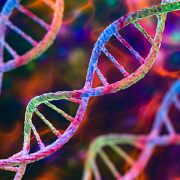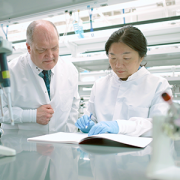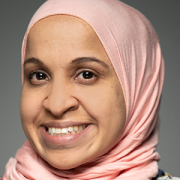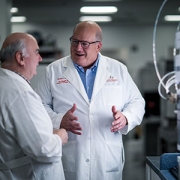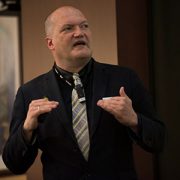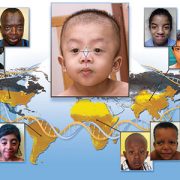Paving the way to activate a single gene in Angelman syndrome
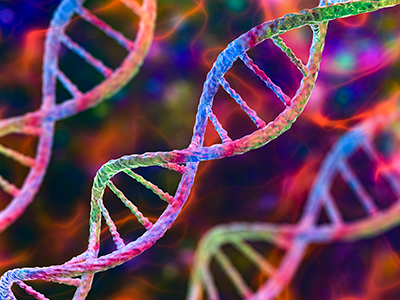
Angelman syndrome (AS) is a rare disorder that causes neurodevelopmental issues such as intellectual disability, impaired speech and motor skills, epilepsy and sleep disruptions. This single gene disorder is caused by mutations or deletions in the maternal copy of the UBE3A gene.
Angelman syndrome (AS) is a rare disorder that causes neurodevelopmental issues such as intellectual disability, impaired speech and motor skills, epilepsy and sleep disruptions. This single gene disorder is caused by mutations or deletions in the maternal copy of the UBE3A gene. To date, there is no treatment for AS.
It is easier to treat this syndrome when the disrupted gene is present but repressed. If experts can figure out how to activate it in clinical trials, they believe patients could receive a treatment that tackles the root of the problem. Children’s National Hospital experts support this vision and the AS community by helping establish appropriate biomarkers for current and future clinical trials.
While the field is trying to figure out the best scientific method to quantify progress in clinical trials for AS, the Sidorov Laboratory found that overnight sleep testing is not necessary for detecting Angelman syndrome electroencephalography (EEG) biomarkers, according to the study published in Autism Research. The data further suggests that while sleep EEGs do not provide additional benefit for detecting delta EEG rhythms, sleep itself represents a valuable AS biomarker.
What this means
“It is encouraging to see that wake EEGs are sufficient, and perhaps ideal, for detecting delta waves in a clinical trial setting,” said Michael S. Sidorov, Ph.D., principal investigator with the Center for Neuroscience Research at Children’s National. “With this biomarker, researchers can measure how AS severity changes in children over the course of a clinical trial. This enables trials to test the efficacy of exciting new treatments.”
The hold-up in the field
In the past decade, the research community has focused on activating the dormant paternal copy of the UBE3A gene in pre-clinical models. Presently, there are three ongoing phase I clinical trials for AS in the U.S. These trials use antisense oligonucleotides (ASOs), which can modify gene expression to treat genetic disorders, and have been FDA approved for other disorders. These new compounds specifically target the gene activation to unleash the existing copy of UBE3A. However, there is a need for better and more accurate ways to know if the drug is working or not. The field has not reached a consensus yet on the appropriate biomarkers that can correctly measure success.
There are also challenges associated with performing overnight EEG studies in children with AS due to the severe sleeping problems, difficulty in tolerating the process and sample recruitment.
The patient benefit
Elizabeth R. Jalazo, M.D., assistant professor of pediatrics at the University of North Carolina in Chapel Hill, chief medical officer at the Angelman Syndrome Foundation, is also the parent of a child with Angelman syndrome. Dr. Jalazo, who was not part of the study, mentioned that her experience with a daughter with a rare disorder had brought challenges to their family over the last seven years. But, alas, she said the joy Evelyn has brought to their lives far outweighs the day-to-day challenges of special needs parenting.
“As a parent I’m thrilled that we can potentially capture as much meaningful EEG data in a short daytime EEG rather than subjecting our children to overnight EEG studies,” said Dr. Jalazo. “As a clinician this is equally exciting from a clinical trial feasibility standpoint.”
One of the greatest challenges facing Angelman syndrome and other neurodevelopmental disorder therapeutic development is the lack of appropriate endpoints to assess the efficacy of our interventions.
“I worry very much that without objective measures specific to Angelman syndrome, potentially beneficial therapeutics may fail to meet the mark and ultimately not reach the community,” she added.
The scientific community has transitioned from the hope of clinical trials to lessen those day-to-day challenges to witnessing first-in-human trials of potentially transformative therapeutics in just the last few years.
“It is a biomarker work like this that is critical as we delve into the exciting landscape of clinical trial design and advance therapeutics for Angelman syndrome,” said Dr. Jalazo.
You can read the full study “Evaluation of electroencephalography biomarkers for Angelman syndrome during overnight sleep” in Autism Research.


